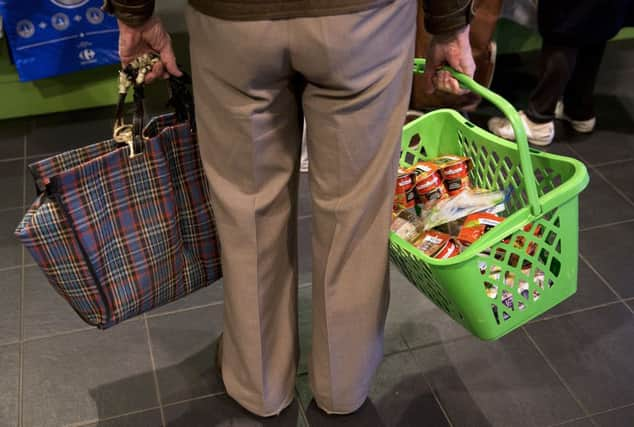Lowest supermarket prices at lowest since 2006


Data from market research firm Kantar Worldpanel found that the inflation of the cost of typical basket of everyday items had fallen for the 20th consecutive month to its lowest level since October 2006, due to the escalation of the supermarket price war.
Discount retailers such as Aldi and Lidl have forced the “Big Four” supermarkets to lower their prices.
Advertisement
Hide AdAdvertisement
Hide AdDeflation was seen in categories including eggs, butter, vegetables and bread, with the negative inflation having saved the average shopper £20 in the past three months.
Competition from the discount retailers has forced Tesco, Sainsbury’s, Morrisons and Asda to resort to lower prices, while many have adopted price comparison guarantee schemes on branded goods. Figures for the three months to 26 April showed that supermarket sales have slowed to a revenue growth of 0.2 per cent compared with last year.
A recent report from Kantar Worldpanel showed that £1 in every £10 spent in Scottish supermarkets is now taken by Aldi and Lidl – a higher proportion than other areas of the UK. The German discounters have a combined share of 10.1 per cent of total supermarket spend across Scotland, above the 10 per cent threshold for the first time.
Fraser McKevitt, head of retail and consumer insight at Kantar Worldpanel, said: “Lower costs are the result of both falling commodity prices and the ongoing supermarket price war, with all major retailers offering cheaper like-for-like goods.”
The figures showed Sainsbury’s to be the strongest performer among the Big Four, boasting a market share of 16.5 per cent.
However, that came despite the chain reporting its first drop in profits in a decade yesterday and a 0.2 per cent fall in sales.
On the positive side, it has been boosted by an increased focus on non-food items and its strength in London, where grocery sales are growing faster than elsewhere in the country.
Aldi and Lidl remained the fastest-growing retailers.
Mr McKevitt added: “While such growth is the envy of the industry, it is slower than in recent months, suggesting the discounter momentum is starting to slow a little.”
Advertisement
Hide AdAdvertisement
Hide AdApart from the discounters, only Waitrose saw an increase in sales, up 1.5 per cent.
However, in a separate report, think-tank CEBR said it expected the price war to end by autumn.
It said: “The supermarket price war that we’ve seen over the past year has to come to an end shortly. With profit margins now wafer-thin, the scope for further compression of margins is limited.
“CEBR expects food price deflation to end by the autumn of this year, with a return to very low price growth by the end of 2015.”
Leigh Sparks, professor of retail at Stirling University, said: “The rise of the discounters has clearly added pressure on the market, but their competitors’ reductions are starting to have some effect.”